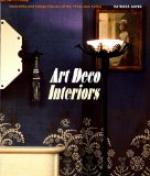FRENCH FURNITURE
The classic periods in French furniture were those known as Francis I, Henry II and the three Louis,—XIV, XV, and XVI. One can get an idea of all French periods in furnishing by visiting the collection in Paris belonging to the government, “Mobilier National,” in the new wing of the Louvre.
It is always necessary to consult political history in order to understand artistic invasions. Turn to it now and you will find that Charles VIII of France held Naples for two years (1495-6), and when he went home took with him Italian artists to decorate his palaces. Read on and find that later Henry II married Catherine de Medici and loved Diane de Poitiers, and that, fortunately for France, both his queen and his mistress were patronesses of the arts. So France bloomed in the sunshine of royal favour and Greek influence, as few countries ever had. Fontainebleau (begun by Francis I) was the first of a chain of French royal palaces, all monuments without and within, to a picturesque system of monarchy,—Kings who could do no wrong, wafting sceptres over powerless subjects, whose toil produced Art in the form of architecture, cabinetmaking, tapestry weaving, mural decoration, unrivalled porcelain, exquisitely wrought silver and gold plate, silks, lovely as flower gardens (showing the “pomegranate” and “vase” patterns) and velvets like the skies! And for what? Did these things represent the wise planning of wise monarchs for dependent subjects? We know better, for it is only in modern times that simple living and small incomes have achieved surroundings of artistic beauty and comfort.
The marvels of interior decoration during the classic French periods were created for kings and their queens, mistresses and favoured courtiers. Diane de Poitiers wished—perhaps only dreamed—and an epoch-making art project was born. Madame du Barry admired and made her own the since famous du Barry rose colour, and the Sevres porcelain factories reproduced it for her. But how to produce this particular illusive shade of deep, purplish-pink became a forgotten art, when the seductive person of the king’s mistress was no more.
If you would learn all there is to know concerning the sixteenth century furnishings in France read Edmund Bonneffe’s “Sixteenth Century Furniture.”
It was the Henry II interior decoration and architecture which first showed the Renaissance of pure line and classic proportion, followed by the never-failing reaction from the simple line to the undulating over-ornate when decoration repeated the elaboration of the most luxurious, licentious periods of the past.
One has but to walk through the royal palaces of France to see French history beguilingly illustrated, in a series of volumes open to all, the pages of which are vibrant with the names and personalities of men and women who will always live in history as products of an age of great culture and art.




